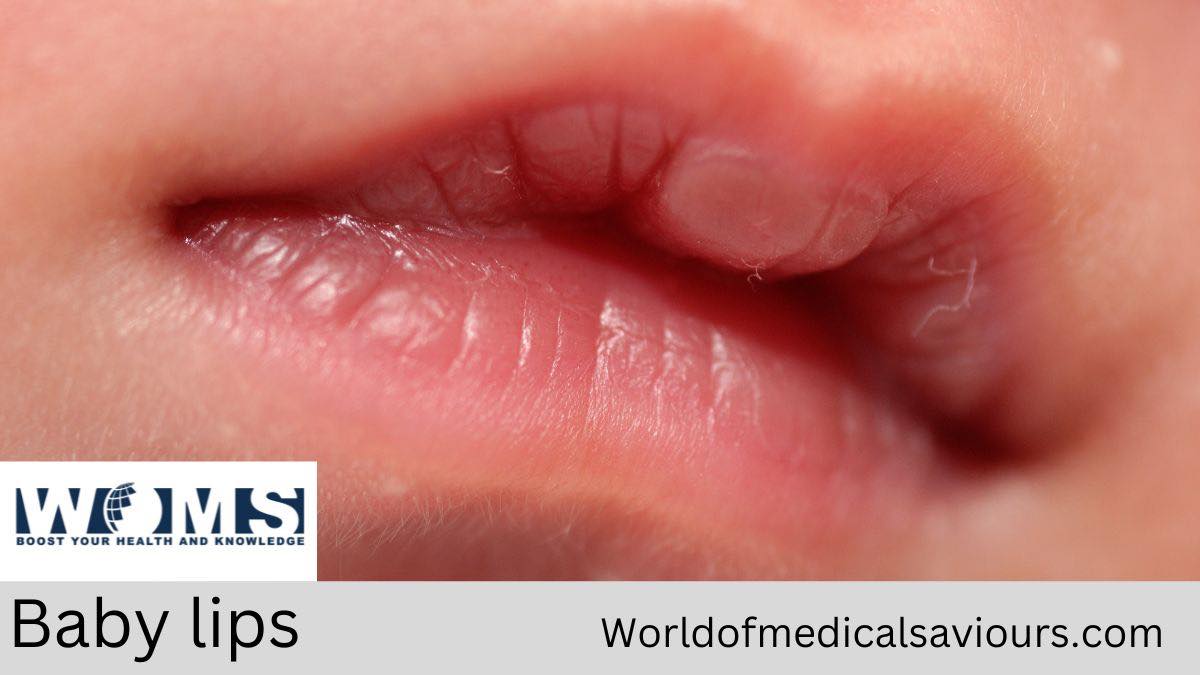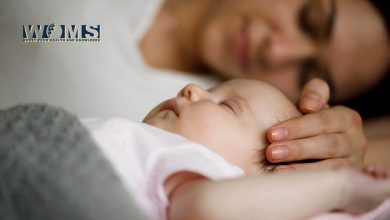Baby Lips: Overview and Chapped lips

Although it is typical for newborns to have baby lips that are significantly dry and red compared to those of older babies, this is not considered to indicate significant suffering or distress. Even though a baby’s chapped lips may occasionally look unpleasant, this condition is typically not the reason for alarm. For eight hours consecutively, Baby Lips moisturizes lips. The lips feel smooth and younger-looking.
Details Regarding The Lips
Lips are distinct oral features, just like fingerprints. The same implies with baby lips. They are crucial for chewing and swallowing, speech production, facial expression, and physiological conservation. Lips are arousal zones as well as sensory organs. Lips are described as “one of the two fleshy curves which enclose the mouth in humans as well as several numerous vertebrates and are organs of human speech important to particular articulations”.
People often question how to make your lips look good? The lips are a fundamental component of the human face and are important for closeness, emotional connection, vocalizations, feeling, mastication, and facial expression. The terms labium superius oris and labium inferius oris, respectively, refer to the upper and lower lips. Mucosal membranes, vermilion, and epidermal surfaces can be seen on the upper and lower lips, respectively.
Overview of newborn baby lips
Although it is typical for newborn babies to have baby lips that are significantly dry and red than those of older babies, this is not likely to indicate any ailment or discomfort. Even though a baby’s chapped lips might often look unpleasant, the indication is typically not to be concerned about.
The baby’s characteristics, notably their red, little baby lips, are all so beautiful and fragile. However, it’s common for the baby to grow chapped lips. Even while this usually gets better on its own, you’ll want to understand things to perform to put the child at ease.
While the skin adapts to the surroundings just outside of the womb, newborn babies can have dry skin, as well as their lips, might look chapped. Their lips can be moisturized and any soreness can be relieved with numerous natural remedies.
Manifestation Of baby lips
A baby can be born with one oral cleft without having the other; they are not necessarily related. With or without a cleft palate, boys are two times more likely than girls to develop a cleft lip. Around weeks four and seven of pregnancy, the baby’s lips develop, and during weeks six to nine of pregnancy, the palate does. The likelihood of a cleft palate without a cleft lip is higher in girls than in boys.
In girls, the top lip attains its greatest width by the age of 14 and maintains until they reach the age of 16, however in boys, it does not develop until the age of 16. After that, the slow and inevitable process of thinning lips for the remainder of one’s life begins for both sexes.
More generally, from the ages of 8 to 80, facial alterations have been observed, and this is significant. When included in the smile, the processes of transformation which have formed can be leveraged to produce outcomes that are more harmonic and natural.
The Purposes of Lips
- Lips play a crucial role in feeding. They maintain the mouth’s seal and regulate the flow of food into and outside of the mouth. Humans can alter the structure of our mouths so that human beings might breastfeed as babies and suck on a straw. Additionally, they contain an enormous nerve supply and are extremely sensitive to touch, heat, and cold.
- Speech output has been one of their greatest prominent functions. Several sounds can be made by altering the movements and placements of the lips. The airflow into and outside of the mouth is also controlled by the lips, allowing individuals to whistle or perform a musical instrument. Lips are also crucial for facial movements, enabling individuals to frown, smile, show their teeth, or indicate sadness.
- Lips appear to serve a variety of purposes, ranging from communicating and feeding to more sophisticated links with enjoyment and sexual orientation. Given their link with youth, appeal, and sexuality, it is no surprise that they are the subject of aesthetic and cosmetic procedures.
- Another significant erogenous zone on the body is the lip area. They are acutely vulnerable to kissing and touching. Additionally connected to increased estrogen levels in women, full lips may also be a symbol of freshness, wellness, and fertility.
All these important functions of lips often bring us to a question – how to get bigger lips?
Why Chapped Lips Are Often Seen in babies?
The child’s lips possess relatively thin skin that lacks the majority of the oil glands seen on the remains of their body. That might appear like a good thing considering how much effort adults invest in attempting to remove extra oil from their skin. However, a significant portion of the moisture and wellness of the skin comes from that oil.
The natural oil on one’s body creates a barrier that protects pathogens outside and maintains it. The skin, as well as the lips of the infants, are the same. Like one’s lips, theirs do not have a particularly robust oil barrier, so the skin there is exposed to irritation and drying out since the body can’t quickly replenish lost moisture. Whenever that occurs, one may see flaking, peeling, tightness, and the additional manifestations of newborn chapped baby lips. And if it becomes unbearable, one’s baby will undoubtedly inform you.
Cleft Lip: What Is It?
Between the fourth and seventh weeks of pregnancy, the lip formulates. Bodily tissues and unique nerve cells from every side of the skull migrate toward the middle of the face during gestation and come together to form the face. The lips and mouth are developed by the tissue coming together. If the tissue which shapes the lip doesn’t adequately unite before delivery, a cleft lip results.
The upper lip becomes open as a consequence of this. The lip’s entrance may be a little bit slit or a wide gap that extends across the lip and deep down the nose. One or both segments of the lip, or extremely rarely, the middle of the lip, might have a cleft lip. Cleft palates may occur in children who have cleft lips.
Baby With Blue Lips
Similar to blue skin, blue baby lips are an indication of low blood oxygen levels. Oxygenated blood is red, which gives skin a warm tinge, particularly lighter skin. Decreased oxygen blood is blue or purple, which causes the skin to turn a similar color.
Since babies’ skin is very thin, this color may be more obvious in areas of the body with the thinnest skin, such as the lips. Individuals who talk about having blue lips might mean that they possess a bluish hue around the lips. This is a frequent problem that often doesn’t get worse and goes away fast. It’s unusual and concerning when the baby lips emerge blue.
How to take care of baby lips?
1. Put some breast milk on the lips
Antibodies found in breast milk can aid in illness resistance. A mother’s breast milk during the first few days after conception comprises colostrum, which could also shield neonates against viruses as well as germs. Breast milk might be utilized to soothe and nourish chapped, dry baby lips by dabbing a few drops on them. Additionally, this could lessen the likelihood of contamination.
2. Apply baby-safe lip balm
Baby shouldn’t be exposed to grown-up lip balms, as well as caregivers should only employ infant-safe products. Natural components are typically found in infant and baby lips balms, and they shouldn’t include the same chemicals as lip balms intended for adults. However, adults must discuss any potential dangers with the doctor or pediatrician before employing a specific product on a new baby.
3. Lip lanolin application
Several individuals use lanolin lotions while breastfeeding to relieve sore nipples. Sheep’s wool naturally contains lanolin. The dry baby lips can benefit from this cream’s soothing and hydrating properties.
Conclusion
Babies need lips because they utilize them for sucking as well as for articulating speaking sounds and expressing feelings through pouting as opposed to smiling. The brains of young babies represent their skill with lips. Although the baby lips might look purplish, they are not blue. It originates from temperature variations and is extremely prevalent in infants.
FAQs
Is a cleft lip detected before conception?
It is possible to identify cleft lip and palate in utero (before delivery). Even before the baby is delivered, a treatment strategy can be created if an ultrasound reveals your unborn kid has these disorders. Women who are expecting shouldn’t smoke or be around others who are.
Must baby lips fall off?
Chapped lips are frequently caused by skin loss. Newborns start to shed portions of a coating known as vernix caseosa once they are out of the womb. which guarded them during their gestation period. Anywhere on their body, even the lips, may have it. You’ll experience skin that is dry as well as cracking throughout the procedure.
Some infants’ lips are extremely pale; why?
It might be thrush, a prevalent and occasionally uncomfortable oral yeast infection. Creamy white or yellow spots might appear on a baby’s lips, tongue, gums, mouth’s sides, or roof due to thrush. Additionally, the throat, tonsils, or esophagus may get infected. Younger children are most frequently affected by thrush.
After breastfeeding, how should a baby’s lips appear?
The baby should have fish-like outward-facing lips. One infant should chin-first lead into the breast before latching onto it. The tongue of the infant should be outstretched, and the breast ought to be full.



